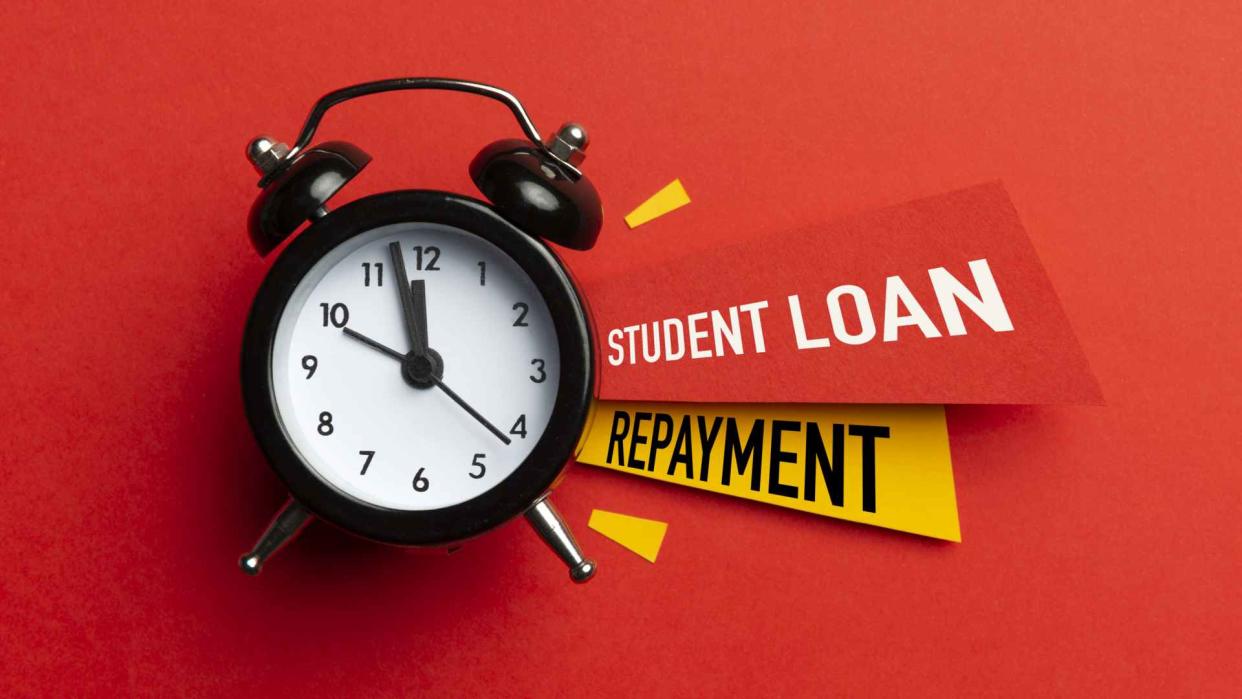How To Prepare for Your Student Loan Payments Beginning Again in October

After a hiatus of more than three years from federal student loan payments, the pandemic-related relief ends Sept. 1, when loans begin accruing interest again. Monthly payments will be due starting in October.
Presidents Donald Trump and Joe Biden authorized the student loan forbearance, allowing relief for Americans whose financial situations were turned upside down to pause the payments. The lifeline also stopped interest from piling up, giving borrowers peace of mind that they weren’t taking on more debt.
Warren Buffett: 12 Things Poor People Waste Money On
Real Estate Agents Say: Buy Property in These 5 States To Be Rich in 5 Years
But the break is nearing an end, loan bills will be generated again and borrowers must resume paying off those balances. After such a lengthy break, it could be tough for some to restart. And it’s time to prepare for the return of the student loan payment. But just how should you go about that?
Connect To Your Account
You probably manage your account electronically and haven’t visited the website in months. Or, your account could have been transferred to another servicer, and you’ve ignored the emails imploring you to register. Now is a good time to sign up with the new provider or to verify that your contact information, including your street address and your email address, is correct with your existing loan servicer. If you’re enrolled in autopay, make sure your bank information is up to date.
“Many students moved home or to other locations during [COVID-19], and their information may not be current,” said Andrew Crowell, vice chairman of wealth management at financial services firm D.A. Davidson. “Don’t take a chance on missing your student loan billing invoice simply because your information is not up to date.”
Erik Kroll, a certified financial planner and owner of Student Loans Over 50, agreed.
“There are going to be a lot of changes with your loans, including some loan servicers changing. You don’t want things to get lost in the shuffle and end up with negative consequences,” Kroll said.” Making sure you know who your servicer is, your address is up to date, etc., will help reduce the risk of any processing snafus.”
Also: All of the States That Will Pay Off Your Student Loans
Add Payments to Your Budget
Which one of these groups do you fit into?
I haven’t paid a penny of my student loans during forbearance.
I’ve paid a little bit when I had some extra money, but not enough to equal the monthly minimum.
I spent my monthly payment on a vacation, home improvement projects or other things.
What forbearance? I never stopped making payments.
I paid more than the monthly minimum.
If you fall into one of the first three categories, add that upcoming payment to your budget right now. Since you’re out of the habit of paying your student loans, it’s time to train yourself again with the limited time you have remaining.
“The best thing to do starting right now is to get on a budget. Plan out all of your income for each month, whatever source derived, and assign each dollar of income a specific job,” said Seth Connell, a financial coach.
“When you don’t have a budget, it is easy to overspend and put yourself in a difficult position… A budget isn’t something that constrains you. It frees you. You set the parameters of it and get to tell your money where to go. Once that student loan payment comes back, working a budget will help you stay on top of things, as well as determine what extra money you can put toward paying it off early.”
Add that money — or at least part of it — to the budget immediately and don’t wait until when the payments come due, said Cameron L. Church, a certified financial planner. Put it away in a savings account.
“It’s going to be a shock to many to see that monthly payment come out of their budget for the first time in months, and if you can get in the habit of seeing it come out now, even just moving the amount to a savings account, it’s going to make the transition loads easier,” Church said.
Make Adjustments
Once you refresh your memory with the details of your payment plan and see how the expenditure fits into your budget, it could be time to make some adjustments — whether by changing your monthly spending or the payments themselves.
The options include applying for an income-driven repayment plan — there are four different types — or changing the one you already have if your income has decreased. The payment under an income-driven repayment plan is based on your discretionary income each month and ranges from 10% to 20% of that amount, depending on the type of plan chosen.
“The best thing a borrower can do is to not put off any of the paperwork, filing or budgeting they need to do. If a borrower knows they will be unable to make their standard monthly payment when payments are turned back on… the best thing to do now is to enroll in an income-driven repayment plan,” said Lindsay Clark, director of external affairs for Savi Solutions, which helps borrowers navigate federal loans. “An IDR plan caps the monthly payment amount.”
More From GOBankingRates
This article originally appeared on GOBankingRates.com: How To Prepare for Your Student Loan Payments Beginning Again in October
